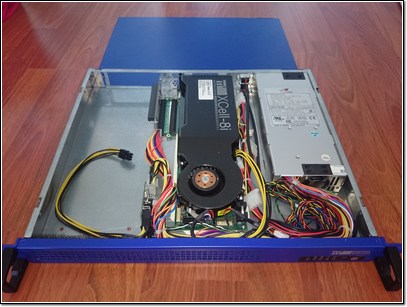For my recently installed PXACB I was looking for a way to remotely power it on and off. I found the Wi-Fi Smart Plug "HS100" and a blog post that it can be controlled from the command-line.
The referenced script uses captured results from wireshark and just re-transmits these messages from a shell script. In one of the comments someone points out that this is XOR'd JSON and how it can be decoded. Instead of a shell script I re-implemented it in Python and I am now always using XOR to encode and decode the JSON messages without needing to include the encoded commands in my script. This makes it easier to read the script and to extend the script.
The protocol used is JSON which is XOR'd and then transmitted to the device. Same goes for the answers. The JSON string is XOR'd with the previous character of the JSON string and the value of the first XOR operation is 0xAB. Additionally each message is prefixed with '\x00\x00\x00\x23'.
The message to turn on the power looks like this:
{
"system": {
"set_relay_state": {
"state": 1
}
}
}
To find more about which commands the device understands I used the information I got from: Why not root your Christmas gift?
I downloaded the firmware for the US model of my smart plug and used binwalk to analyze the content of the firmware. The firmware contains busybox based ramdisk which includes the smart plug relevant programs /usr/bin/shd and /usr/bin/shdTester and it seems at least following commands exist:
- system
- reset
- get_sysinfo
- set_test_mode
- set_dev_alias
- set_relay_state
- check_new_config
- download_firmware
- get_download_state
- flash_firmware
- set_mac_addr
- set_device_id
- set_hw_id
- test_check_uboot
- get_dev_icon
- set_dev_icon
- set_led_off
- set_dev_location
With the knowledge from the original shell script implementation and the results from binwalk I wrote the following script: https://lisas.de/~adrian/hs100.py
Using this script I can power the device behind the smart plug easily on and off:
$ ./hs100.py -H p-pxcab.example.com off
$ ./hs100.py -H p-pxcab.example.com state
Power OFF
$ ./hs100.py -H p-pxcab.example.com on
$ ./hs100.py -H p-pxcab.example.com state
Power ON
The only annoying thing about the smart plug is, that it tries to communicate with some cloud systems so that it could be controlled from anywhere. After starting the smart plug it makes a name lookup for devs.tplinkcloud.com and connects to port 50443. I can connect to that system with openssl s_client -connect devs.tplinkcloud.com:50443 but what the smart plug actually sends to that system I do not know. If I do not block the smart plug in the firewall I see a NTP request after that and then the communication seems to stop. Right now the smart plug is blocked and does no NTP requests but it still tries to reach devs.tplinkcloud.com:50443 once a minute.
